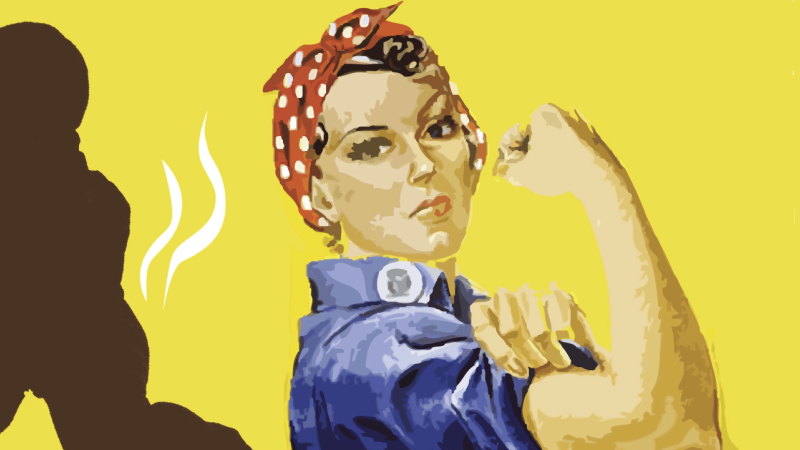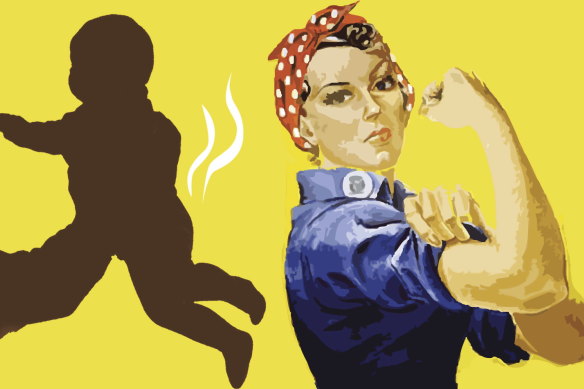Save articles for later
Add articles to your saved list and come back to them any time.
After my mother died 10 years ago, my sister and I expeditiously cleared her wardrobe save for two items: a black mink – wear it and suffer instant social death – and a prosthetic breast. Mum had worn the prosthesis for decades having seen off breast cancer long before an entirely different cancer killed her.
It was full, as malleable as real flesh, with the subtle outline of a nipple.
Motherhood requires many compromises.Credit: Simon Bosch
I was conscious of its presence in the now barren wardrobe. In one sense it was an impersonal, utilitarian thing; unlike clothes, a mound of silicon does not retain a person’s scent. And yet for nearly a quarter of a century, as mum looked after patients in her GP practice, taught her grandchildren to climb trees, mourned the death of her siblings, argued, travelled, read and laughed till she cried, this fake breast had helped her look and feel whole.
And her absence felt like a lost limb.
This column is not about death. Nor is it specifically about breast cancer. But as an illness that most frequently strikes after age 50 – mum was 60 when she was diagnosed – breast cancer is a fitting peg for the bigger theme of the female life cycle, and the tension, and tenderness, between mothers and daughters.
The tenderness is palpable each year at the Mother’s Day Classic, the thousands-strong fundraiser for breast cancer research. Generations of women march in uniform pink against an insidious enemy. They wear signs commemorating the fallen. On this day younger women allow themselves a glimpse at their future self, which, cancer or no cancer, will be battle-worn.
On other days daughters and mothers pull in different directions.
I have a childhood memory of mum raving about the popular 1970s manifesto, Nancy Friday’s My Mother/My Self: The Daughter’s Search for Identity. Friday argued that women of her generation had been reared by their mothers to conform to a pre-feminist ideal of womanhood and must now fight to overcome such conditioning.
“Such an interesting book,” mum said.
I was incurious about why she found My Mother/My Self so interesting. Nor was I interested in her advice that jobs such as teaching, optometry and dentistry were “good” for women because they were secure and the hours family friendly. I did not see a steady job or even a family, really, on my limitless horizon.
And I recoiled from her affectionately brutal assessment of men that drew little distinction between the Russian soldiers she had managed to dodge as they raped their way through Eastern Europe in the aftermath of WWII, and the blokes who ran their eyes down my teenage body as we strolled down Glenferrie Road. Men were “bastards” until proven otherwise. I fancied myself sexually “empowered”, more than equipped to handle men. I stuck to this line even as experience began to tilt the evidence in mum’s favour.
Now I’m reaching that juncture where a woman starts to think of herself as the sum of all the compromises she’s made, or been forced to make. Short on income because she’s worked part-time or not at all since having children. Or she’s missed out on having children. Or she’s had low-paying jobs. Or she’s been traded in by her “bastard” husband.
Most days I seethe with a rage I can barely articulate.
“I’m reading this book,” I told my 14-year-old in the car, a few weeks ago. “It’s called Hags: The Demonisation of Middle-Aged Women. It’s radicalised me.”
“You were already radicalised, mum,” she quipped, eyes glued to her phone.
In Hags, Victoria Smith writes from the perspective of women like me, Generation X-ers, the direct beneficiaries of gains made by second-wave feminists of the 1960s and 70s. In our youth we X-ers talked about “empowerment,” affected irony and assumed we’d out-liberate our mothers at work, and at home.
But now we’re middle-aged; losing what Smith refers to as the three Fs: “fertility, femininity and f—ability.” Now it’s our turn to wear the age-old slur of “hag”, “witch”, or a contemporary variant such as “Karen”.
Smith argues this misogynist contempt for older women and the ridiculing of their views – often at the hands of younger women – enables regressive beliefs to be recast as progressive. It also harms younger women because they’re likewise destined to end up on the so-called wrong side of history.
Mum’s prosthesis sat in the wardrobe for months. Then by chance I caught an interview on ABC radio. A woman, Heather Tait from the NSW south coast, was calling for donations of prosthetic breasts for post-operative women in Fiji. During her frequent holidays to the island Tait had met rural women so poor they couldn’t afford such things. One had been blowing up balloons to stick in her bra so she could fit into clothes.
Many women don’t have the luxury of hiding their wounds.
I knew Mum would endorse Tait’s firmly practical gesture of sisterhood.
My hands shook at Australia Post as I stuffed the shimmering mass into a padded envelope, the lady behind the counter watching me. It felt like I was packaging the last piece of mum. But I am mum. When I look at myself naked, it’s her middle-aged body I see.
“It’s OK,” the lady said gently. “Take your time.”
The Opinion newsletter is a weekly wrap of views that will challenge, champion and inform your own. Sign up here.
Most Viewed in National
From our partners
Source: Read Full Article

